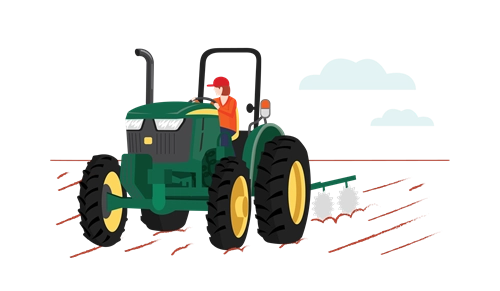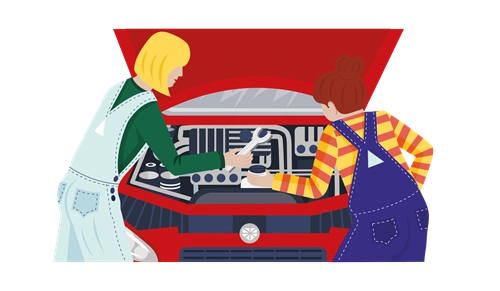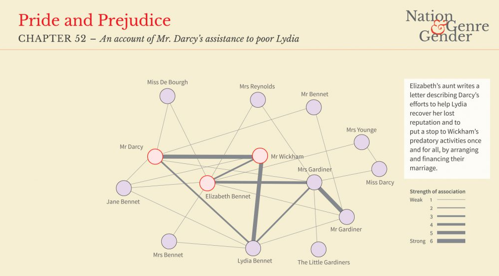-
Curriculum alignment
Mathematics
AC9M10P02 – design and conduct repeated chance experiments and simulations using digital tools to model conditional probability and interpret results
Science
AC9S10I04 – select and construct appropriate representations, including tables, graphs, descriptive statistics, models and mathematical relationships, to organise and process data and information
Design and Technologies
AC9TDE10K02 – analyse the impact of innovation, enterprise and emerging technologies on designed solutions for global preferred futures
- S
- T
- E
- M
Zombies and network models
Years 9 and 10
Learning hook
Infectious disease is a familiar topic for our students, both in their daily lives and entertainment media.
Introduce the topic by asking students what they know about zombie outbreaks in television shows or films. What is the pathogen? Who is susceptible to it? How does it spread?
Girls in focus
Girls may not associate popular culture with STEM pursuits. Beginning a unit by tapping into students’ areas of expertise – such as their knowledge of current television shows or films – affirms the cultural capital they bring to the topic and can build their confidence to engage with STEM.
Explain that epidemiologists study spread of disease using epidemiological models. Often, the development of these models represents a collaboration between scientists, mathematicians and systems engineers. Governments make decisions about whether to implement public safety measures based on these models and predicted outcomes of different interventions.
Have students explore HHMI’s SIR model of disease transmission. Work through the tutorial together, then give students the opportunity to investigate changing the parameters of the model.
As a class, discuss the strengths and limitations of the simple grid SIR model for modelling transmission of a disease. For example, draw student attention to the number of people who can be close contacts, and ask if this represents all possible infection scenarios. Through discussion, explore how else we could model close contacts.
Learning input
A newer model for simulating disease transmission involves using network models to represent the population.
Students will have come across network representations in different aspects of their STEM learning, such as computer networks and food webs.
Network models are a way of representing connections or relationships between objects. Each object is represented as a node and connections between objects are represented as links. Watch this video to understand social network analysis.
Before they can explore network models and spread of disease, students need to be familiar with this type of representation. In particular, they need to understand nodes and edges. This article provides a great starting point for understanding social network models and considering how a systems engineer might use network representations compared to an epidemiologist.
Students can create their own social network representations using FigJam, a free Figma template.
Have students watch an episode of an ensemble drama or comedy – one where there is a group of major and minor characters who all interact in different ways. As a class, make a list of all the main characters, then draw lines between them to show which characters interacted across the episode. Where characters had multiple or sustained interactions, show this by drawing a thicker line to link them.
As a class, discuss whether the social network map for every episode would look the same. If not, explore what might change.
Explain to students that we can also use network models to explore spread of disease through a population. Have them explore this simulator from LabXchange, which models COVID transmission using networks.
Tell students to set the simulation type to ‘static’. This will give them a series of transmission periods, and they will be able to see the progression of disease across those periods. Give students some time to investigate changing the simulator parameters and practise interpreting the transmission network diagrams that result.
Discuss what is meant by the different link colours, and the difference between asymptomatic and quarantined individuals. Explore the assumptions made in this model.
Girls in focus
Engineering lends itself to connecting many different fields with STEM. A career in engineering can be similarly diverse. Listen to this talk from Professor Ellen Kuhl, a mechanical engineer who has applied her expertise to developing computational models to predict the response of living structures to disease.
As a class, discuss the strengths and limitations of the simple grid SIR model for modelling transmission of a disease. For example, draw student attention to the number of people who can be close contacts, and ask if this represents all possible infection scenarios. Through discussion, explore how else we could model close contacts.
Learning construction
Back to pop culture! Students can explore modelling disease through introducing a zombie pathogen to a classic ensemble novel. Have students create a network representation to show the interactions between characters in one chapter of Pride and prejudice, or use one of these maps as your starting point.
Alternatively, students could select a chapter from another novel – note that the chapter should feature all the characters coming together in different groups and should include an ensemble of at least eight characters.
Now, students imagine one character is infected with a virus (let’s call it Zombixitus).
First, students will need to describe the disease and determine the probability of an individual infecting others.
They will then select a character randomly to be the first one infected with Zombixitus (different individuals or groups may select different characters).
Students can then use the LabXchange network simulation model to see how the virus might move between characters. Who would be infected and in what order?
Note that in this model individuals are quarantined and recover.
Challenge students to create a series of transmission network diagrams to show what might happen if some individuals were not quarantined but stayed active in the community.
Students can then write a short alternative chapter to match the transmission network diagrams and describe the spread of disease through the ensemble.
Girls in focus
Girls may not appreciate that the skills they develop in STEM are readily transferable to other learning areas. By connecting mathematical representations to fiction, students can appreciate the value of STEM as a journey, as well as a destination. In addition, by tapping into girls’ talents in other, non-STEM fields, you can support them to bring the confidence they feel within those identities to their STEM pursuits.
-
Rubric
Assessment
Criteria
Beginning
Achieved
Exceeded
Heat transfer modelling
Models direct solar radiation to the suit and radiation of body heat to the suit interior.
Models direct solar radiation to the suit; radiation of body heat to the suit interior; and conduction and convection of heat to circulating water/gas.
Models direct solar radiation to the suit; radiation of body heat to the suit interior; and conduction and convection of heat to circulating water/gas. Also models thermal insulation properties of the suit.
Considerations given to the use requirements of the suit
Identifies simple use requirements related to astronaut movement and the space environment.
Identifies use requirements related to dynamic astronaut movement and comfort, the space environment and mission length.
Identifies use requirements related to dynamic astronaut movement and comfort, the space environment, mission length and unexpected component failure.
Communication
Animation communicates features of the suit, demonstrating selection of some appropriate content, representations, language and text features.
Animation clearly communicates operation of key features of the suit, including appropriate use of content, representations, language and text features.
Animation communicates operation of key features of the suit effectively and in an engaging way, including selection of appropriate content, representations, language and text features.
.











